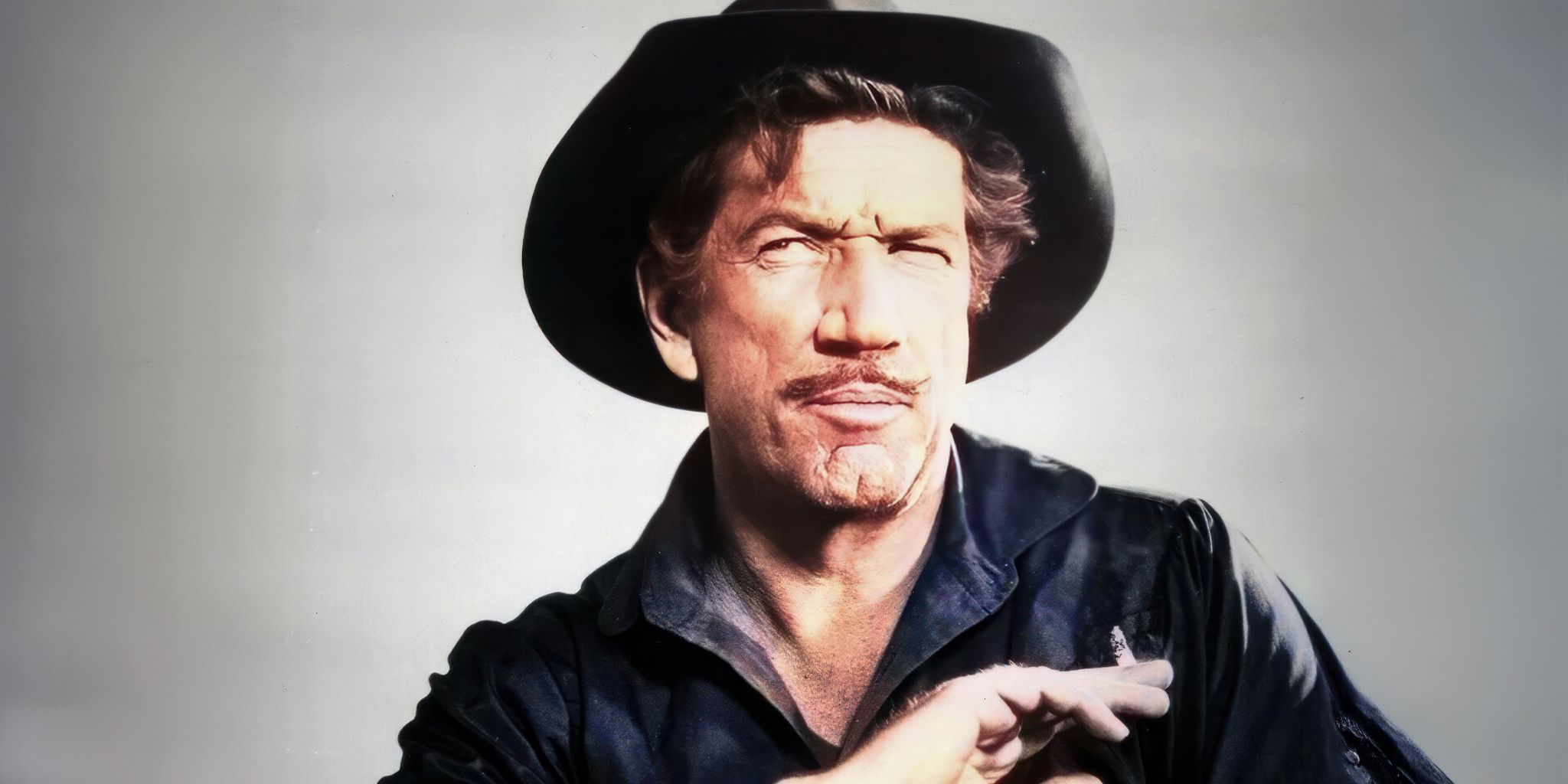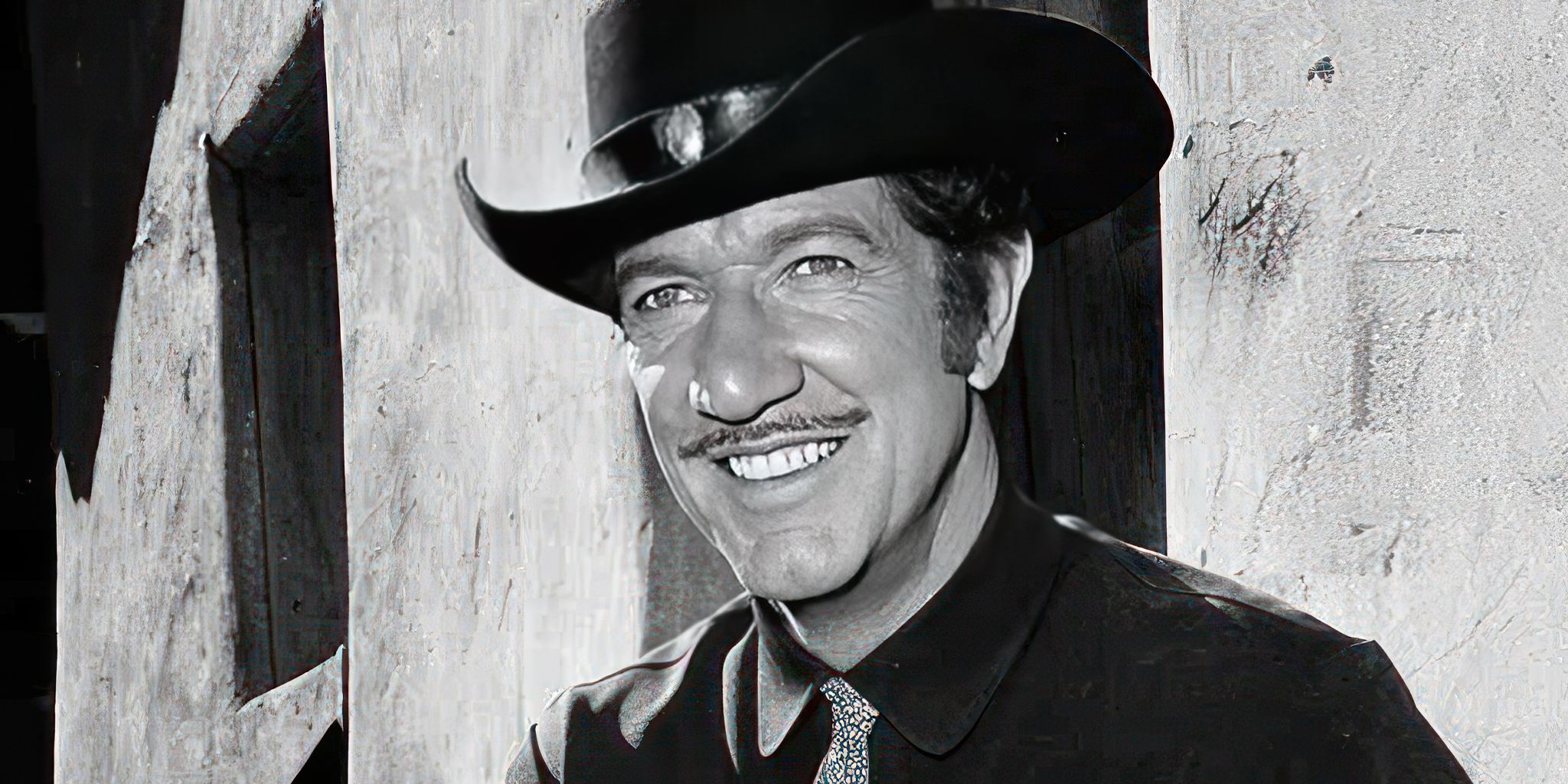In most television Westerns, the very first time we see a leading cowboy hero is often on horseback or walking down the main strip of whatever Old West town they happen to call home. But there’s one TV hero who debuted in two distinct lights in the first episode in which he appeared, with dual introductions that couldn’t have been more different from the other. In case you haven’t guessed, we’re talking about Richard Boone‘s Paladin, the leading man in the iconic six-season Western series, Have Gun — Will Travel.
Paladin’s Entrance in “Three Bells to Perdido” Broke the Western Mold
In the first episode of Have Gun, titled “Three Bells to Perdido,” we are first introduced to Paladin at the Hotel Carlton in San Francisco, California, a non-traditional Western setting (and home to the short-lived The Californians) to begin with. Here, unlike the standard cowboys, lawmen, or ranchers who made the television Western their home, Paladin (who is never given a first name on the series) appears from upstairs clad in a white suit, laughing with his female companion. For a show called Have Gun — Will Travel, this introduction doesn’t scream action or suspense, but it does give us a fascinating picture of the man we’re about to join on this journey. From what we can see of the leading man, he’s well-off, educated, and used to the finer things of life. It’s a stark contrast to the rugged Western hero who usually headlines TV Westerns.
In fact, “Three Bells to Perdido” ends with Paladin back in this cushy hotel setting rather than watching him ride into the sunset. When we first see our hero, he’s dressed in white, and he ends the episode that same way. But this distinct picture we get of Paladin shatters when he takes a job with a rough rancher who has no desire to pay his fee. When Paladin arrives for duty in the next scene, he is dressed in all black, looking a lot more like the standard gunfighter we’d expect from a show with “gun” in the title. There is a long Western tradition that good guys wear lighter hats while the villains wear black hats. Many shows have followed this formula over the years, but Have Gun famously broke the mold.
While Paladin is first introduced with this brighter apparel to confirm to the audience his side on the moral scales, he switches to black when on the job, knowing that it may get more violent than he hopes for. But it’s not until the rancher asks for Paladin’s gun that we see this other side to the hero. Though Paladin allows his new employer to examine his firearm, when the rancher turns it on Paladin, the gunslinger reveals a smaller pistol, proving himself more than just a distinguished gun but also an intelligent one.
‘Have Gun — Will Travel’ Pushed the Boundaries of Western Heroism
Over the course of “Three Bells to Perdido,” we begin to understand that Have Gun — Will Travel is not your usual Western, even if the program did bow to many genre conventions over the years. From that iconic opening sequence to the chess knight cleverly embroidered on his holster, there was always something different about Paladin — something that drew viewers to him. In their book, The Complete Directory to Prime Time Network and Cable TV Shows, 1946–Present, authors Tim Brooks and Earle Marsh note that Have Gun became a quick hit with audiences everywhere. In an age where Gunsmoke and Wagon Train were two of the most popular television shows on the airwaves (not to mention the most popular Westerns), the adventures of Paladin became “the number three program on television” between 1958-1961.

Related
10 Classic Western TV Shows That Still Hold Up, According to Reddit
Saddle up and enjoy these vintage Western shows, partner.
For six seasons (and 225 episodes), the show took Paladin all across the Western United States on deep, thoughtful adventures. From Nativity-inspired Christmas stories to tackling issues of prejudice and ignorance, there was a lot more to Paladin’s travels than simple gunplay and clichéd Western antics, and that’s part of why audiences found a quick kinship with him. Richard Boone may not have had the softer features of other Western stars, but he always delivered a powerful performance as Paladin that was well-worth watching. While other shows like Gunsmoke would move from being half-hour episodes to full-hour airtimes, Have Gun remained true to its initial format throughout, airing on CBS between 1957 and 1963.
Richard Boone’s Paladin Remains One of the Best TV Western Heroes
Of course, like many Western protagonists, Paladin was a West Point graduate and Civil War veteran, but there was a lot more to him than that. He was also a well-educated man who used his brains as much as his brawn to solve his problems. Even more intelligent than James Arness‘ Marshal Matt Dillon, Paladin was “a man of culture, enjoying the finest clothes, epicurean meals, and literate company — except when he was on assignment,” as Marks and Brooke write. Again, it was then, while wandering around the untamed and deadly Wild West, that Paladin resorted to his more threatening black attire. It was clearly intentional, as he needed to ensure that his prey would know that he meant business by being there. He wasn’t just accustomed to the finer things, he was also willing to get his hands dirty — so long as he remained true to his own moral code.
It’s no wonder that future Star Trek creator Gene Roddenberry was drawn to this character. In fact, Paladin would inspire the screenwriter’s most famous characters in the same way that Wagon Train informed its initial premise. But beyond that, the Western hero remains one of the most interesting leading men of the entire genre. It’s hard to understate how much of a trailblazer Richard Boone’s Paladin was in an era full of Bret Mavericks, Ben Cartwrights, and Wyatt Earps (of the Hugh O’Brian variety, anyway). There’s a reason that the entire plot of the 1990s TV Western reunion special, The Gambler Returns: Luck of the Draw, centers on a card game dedicated to Paladin’s honor. It’s no wonder that Western fans still flock to Have Gun — Will Travel, and will likely continue to as the genre continues to expand.


